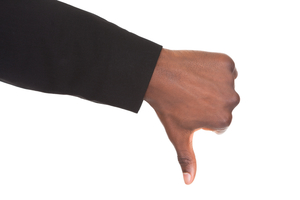You must call for the negative vote

© Can Stock Photo/Andrey Popov
Updated November 18, 2022
One of the surprising rules about voting is that when taking the vote, the chair MUST call for the negative vote—even if the chair is perfectly certain that there were enough votes in favor to pass the motion. This ensures that everyone enjoys their full right to vote, even if they are a member of a minority, or no one expected them to vote against.
The principle goes back to 1604, when King James I (of the King James Bible) and Parliament were butting heads. The Journal of the House of Commons says, “It is no full Question without the Negative part be put, as well as the Affirmative.”
How to call for the negative vote
The chair should say,
– All those in favor say “aye.”
– All those opposed say “no.”
– [Announce the result] The “ayes” have it OR the “noes” have it.
– [Announce whether the motion passes or fails] The motion passes OR The motion fails.
– [State what will happen as a result of the vote.]
Two exceptions to requirement to call for the negative vote
An exception to this rule is when putting noncontroversial motions of a courtesy or complimentary nature. Even in such a case, however, if any member objects, the chair must call for the negative.
Another exception arises when the negative vote is intrinsically irrelevant as, for example, when “a vote on one fifth of the members present” is required, and the number who have voted in favor is clearly greater than one fifth of those present.
References to negative vote
You can find references to the negative vote in Robert’s Rules of Order Newly Revised, 12th edition:
- page xxxiii
- Section 4:35
- Section 44:9(a)
and 45 of Robert’s Rules of Order Newly Revised, 12th edition.

